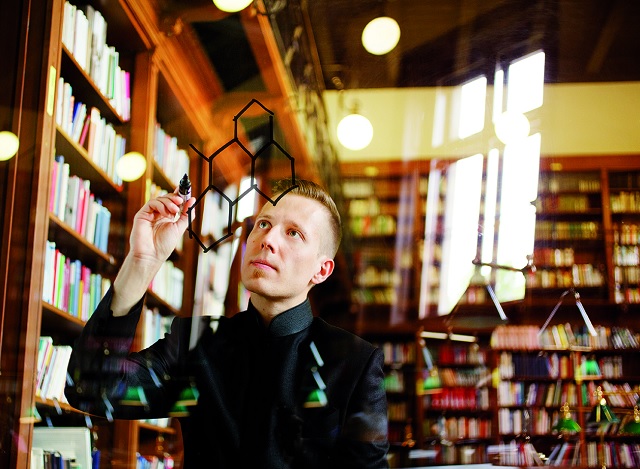 Toma Susi. Image Credit: Peter Rigaud, University of Vienna.
Toma Susi. Image Credit: Peter Rigaud, University of Vienna.
Researchers from the University of Vienna have used single-layer graphene with silicon atoms embedded into its lattice in order to study the manipulation of single atoms.
The team of scientists used detailed computer simulations to show that 60 keV electrons which are used for imaging with Nion microscopes, do not possess the energy required to eject atoms. Electron microscopy has previous been used to manipulate single atoms in materials. However, in many experiments the electron beams cause damage to the material being studied.
The dopant silicon atoms, which the researchers added to graphene, were larger in size than the carbon atoms causing the silicon atoms to protrude outside from the plane. Carbon atoms which were located adjacent to a silicon dopant atom were not as strongly bound as other atoms in the material.
Video abstract: Silicon-carbon bond inversions driven by 60 keV electrons in graphene
A slight ‘kick’ can cause these carbon atoms almost to escape the surface of the material but the force of attraction between the atoms of silicon causes it to be recaptured. A lattice position is left vacant by the carbon atom and an adjacent silicon atom slips into this lattice position. As a result, a carbon atom lands on the opposite side of the place from where it left.
The team of researchers at the University of Vienna clearly observed around 40 inverted silicon-carbon bond jumps which were analysed and found to be in accordance with theoretical predictions.
What makes our results truly intriguing is that the bond flip is directional – the silicon moves to take the place of the carbon atom that was hit by a probe electron.
Toma Susi - University of Vienna physicist & FWF Lise Meitner Fellow
This new study opens up the possibility of controlling the movement of silicon atoms with atomic precision, which may lead to the development of new types of quantum corrals in the near future. This study was published in Physical Review Letters.